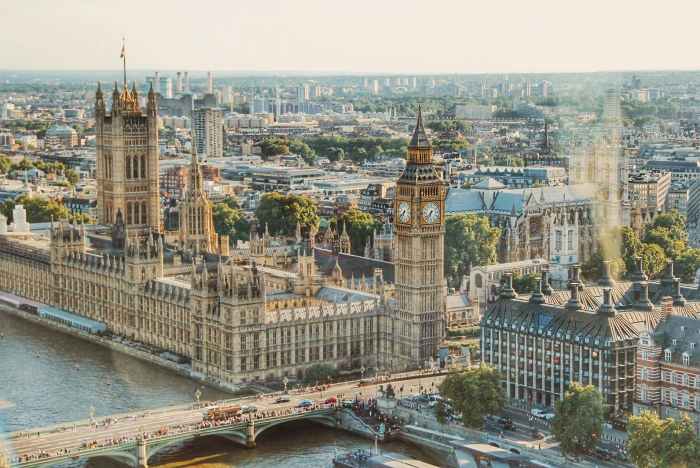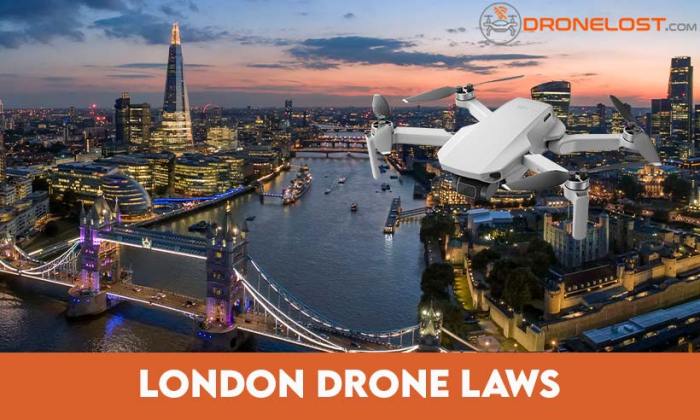Historical Context of Drones in Royal Parks
The integration of drones into the airspace above London’s Royal Parks is a relatively recent phenomenon, reflecting the rapid evolution of drone technology and its increasing popularity for recreational and commercial purposes. While the historical use of drones in these parks is limited, it’s essential to understand the changing landscape of drone technology and its impact on public spaces.
Evolution of Drone Technology and Recreational Activities
The emergence of drones, particularly those designed for recreational use, has revolutionized the way people interact with their surroundings. Initially, drones were primarily associated with military applications, but advancements in technology, miniaturization, and affordability have made them accessible to a broader audience. This accessibility has fueled a surge in drone-based recreational activities, including aerial photography, videography, and even racing.
Reasons for the Drone Ban
The Royal Parks’ decision to ban drones stems from a comprehensive assessment of the potential risks these devices pose to the unique environment and visitors of these cherished green spaces.
Safety Concerns
Drones, despite their increasing popularity, can present significant safety concerns in densely populated areas like Royal Parks. The potential for accidents, particularly those involving collisions with aircraft or other objects, is a major concern.
- The unpredictable nature of drone flight, especially in windy conditions, can make it difficult to control their trajectory, potentially leading to collisions with trees, buildings, or even people.
- Drones operating at low altitudes could pose a risk to aircraft, particularly helicopters operating in the vicinity of the parks, potentially disrupting air traffic or causing accidents.
Impact on Wildlife
The presence of drones can significantly disrupt the natural behavior of wildlife in Royal Parks, potentially causing distress and even injury.
- The noise and movement of drones can frighten birds, disrupting their nesting and feeding patterns. Some species, particularly those that are ground-nesting or have young, are especially vulnerable to disturbance.
- Drones can also interfere with the mating and breeding behaviors of various animals, leading to reduced reproductive success.
- In some cases, the presence of drones has been known to cause birds to abandon their nests, leaving their eggs or young vulnerable to predators.
Impact on Historical Structures, Royal parks in london no longer welcome drones
The Royal Parks are home to numerous historical structures, many of which are delicate and vulnerable to damage. Drones, with their potential for collisions and the risk of dropping objects, pose a significant threat to these heritage assets.
- The vibration caused by drones flying close to historical structures can potentially damage their foundations and weaken their structural integrity.
- The risk of drones colliding with these structures, particularly during windy conditions, can cause significant damage to their facades, sculptures, or other architectural features.
- The potential for drones to drop objects, such as cameras or batteries, during flight could also cause damage to historical structures.
Impact on Park Visitors
The presence of drones in Royal Parks can also pose a threat to the safety and enjoyment of park visitors.
- The noise generated by drones can disrupt the peaceful atmosphere of the parks, particularly in areas frequented by visitors seeking tranquility and relaxation.
- The potential for drones to collide with visitors or drop objects on them can pose a direct safety risk.
- The use of drones for commercial photography or filming without proper authorization can infringe on the privacy of park visitors.
Comparison to Other Public Spaces
The Royal Parks’ drone policy aligns with regulations in place at many other public spaces worldwide. Many airports, national parks, and other sensitive areas have implemented drone bans or restrictions to protect public safety, wildlife, and cultural heritage.
- In the United States, the Federal Aviation Administration (FAA) has established strict regulations for drone operation, including restrictions on flying over populated areas and near airports.
- Many national parks in the US and around the world prohibit drone use, citing concerns about wildlife disturbance and potential damage to sensitive ecosystems.
- Several countries, including the UK, have introduced legislation requiring drone operators to register their devices and obtain permits for commercial operations.
Impact on Recreation and Photography
The drone ban in Royal Parks has significantly impacted recreational activities, particularly photography and videography. While the ban aims to protect wildlife and privacy, it has also limited creative opportunities for enthusiasts.
Drone Photography vs. Traditional Methods
The drone ban has forced photographers and videographers to explore alternative methods for capturing the beauty of Royal Parks. While drones offer unique perspectives and aerial views, traditional methods still have their advantages.
| Drone Photography | Traditional Methods | |
|---|---|---|
| Advantages | Unique aerial perspectives, wider coverage, ability to capture vast landscapes | More accessible, lower cost, no restrictions on usage |
| Disadvantages | Limited by regulations, potential safety hazards, requires specialized equipment | Limited perspectives, requires more effort to capture wide landscapes, can be challenging in certain areas |
Alternative Photography Techniques
Several alternative photography techniques can be employed to capture stunning views of Royal Parks without using drones.
- High vantage points: Explore elevated locations like bridges, hilltops, or even tall buildings with permission to capture panoramic views.
- Wide-angle lenses: Use wide-angle lenses to capture expansive landscapes and create a sense of depth.
- Time-lapse photography: Capture the changing light and movement of clouds by taking multiple photos over a period of time.
- Creative compositions: Utilize foreground elements, leading lines, and interesting angles to create visually appealing photographs.
Public Opinion and Reactions: Royal Parks In London No Longer Welcome Drones
The drone ban in London’s Royal Parks has sparked a diverse range of reactions from the public, reflecting a complex interplay of perspectives on recreational activities, privacy, and security. Some applaud the ban, citing concerns about safety and the potential for disruption, while others express disappointment, arguing that drones offer unique opportunities for photography and exploration.
Social Media Discussions and News Articles
Social media platforms have become a vibrant space for public discourse on the drone ban, with users sharing their opinions, experiences, and perspectives. A quick search on Twitter reveals a mix of reactions, with some users expressing support for the ban, citing concerns about safety and the potential for drones to be used for illegal activities. For example, a tweet from @Londoner123 reads, “Good move! Drones can be a nuisance and pose a threat to wildlife and public safety.”
Others argue that the ban is overly restrictive and hinders legitimate recreational activities. A post on Facebook by a photography enthusiast group states, “Disappointed by the ban. Drones offer a unique perspective for capturing stunning aerial shots of the parks.”
News articles have also covered the drone ban, offering different perspectives on the issue. The Guardian published an article titled “Drone ban in London’s Royal Parks sparks debate,” exploring the arguments for and against the ban. The article quoted a spokesperson for the Royal Parks, who stated that the ban was necessary to protect the parks’ natural environment and wildlife. However, the article also included voices of dissent, with photographers and drone enthusiasts expressing their disappointment.
Survey Design to Gauge Public Opinion
To gain a deeper understanding of public opinion on drone use in Royal Parks, a survey could be designed to gather data on various aspects, including:
- Awareness of the drone ban
- Reasons for supporting or opposing the ban
- Frequency of drone use in Royal Parks before the ban
- Impact of the ban on recreational activities
- Suggestions for alternative solutions to address concerns related to drone use
The survey could be distributed through online platforms, social media, and local community groups. The results would provide valuable insights into public attitudes towards the ban and inform future policy decisions.
Future of Drone Regulations
The drone ban in Royal Parks, while intended to protect wildlife and public safety, has sparked debate about the future of drone regulations in these iconic green spaces. Balancing the desire for recreational drone use with the need to preserve the unique environment of Royal Parks presents a complex challenge.
Evolving Drone Regulations
The future of drone regulations in Royal Parks is likely to involve a combination of technological advancements, public engagement, and a nuanced approach to risk assessment. The current blanket ban may evolve into a more granular system that considers factors such as:
- Designated Drone Zones: Creating designated areas within Royal Parks where drone use is permitted under specific conditions, such as limited flight times, altitudes, and designated flight paths.
- Geofencing Technology: Utilizing geofencing technology to automatically restrict drone flights in sensitive areas, such as wildlife habitats or areas with high pedestrian traffic.
- Drone Registration and Licensing: Implementing a system for drone registration and licensing, ensuring operators are aware of and adhere to specific regulations.
Alternative Solutions for Drone Management
While a complete ban on drones may seem like a straightforward solution, alternative solutions offer a more nuanced approach:
- Drone Education and Awareness Campaigns: Raising awareness among drone operators about the potential risks to wildlife, public safety, and park infrastructure. This could involve educational materials, workshops, and online resources.
- Drone Spotter Programs: Employing park rangers or volunteers to monitor drone activity and educate operators on responsible drone use. This approach could involve a combination of visual observation and technology-based monitoring.
- Drone-Specific Regulations for Specific Parks: Tailoring drone regulations to the unique characteristics of each Royal Park, taking into account factors such as wildlife presence, visitor density, and potential risks.
Role of Technology and Innovation
Technological advancements play a crucial role in shaping future drone policies:
- Advanced Drone Detection Systems: Utilizing advanced sensors and AI-powered systems to detect and track drone activity in real-time, enabling proactive intervention and enforcement.
- Drone Communication and Control Technologies: Implementing technologies that allow park authorities to communicate with drone operators, potentially enabling remote intervention or flight path adjustments.
- Biometric Identification for Drone Operators: Exploring the use of biometric identification systems to verify the identity of drone operators, potentially deterring unauthorized drone use.
Royal parks in london no longer welcome drones – The drone ban in Royal Parks is a complex issue with far-reaching implications. While it aims to prioritize safety and environmental protection, it also restricts the creative possibilities of drone photography and videography. The future of drone regulations in these spaces remains uncertain, with ongoing discussions about balancing recreational use with responsible drone operation. As technology evolves, the relationship between drones and public spaces will continue to be a subject of debate, with the Royal Parks serving as a case study for navigating this evolving landscape.
So, you can’t fly your drone over Buckingham Palace anymore. It’s a bummer, but hey, at least you can now create your own Twitter Moments, sharing all the fun (and non-drone related) things you do in London, like maybe a visit to Hyde Park. twitter moments can now be created by anyone , so get creative and share your London adventures! Just leave the drones at home, okay?
 Standi Techno News
Standi Techno News

